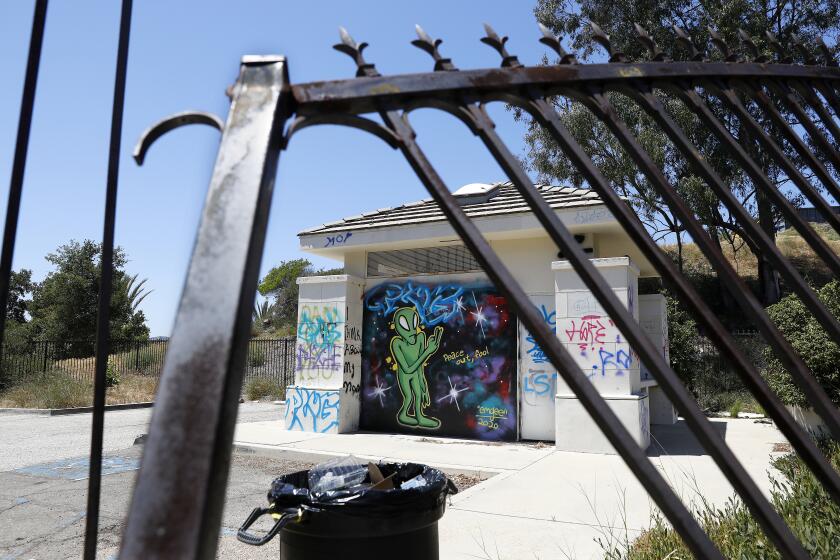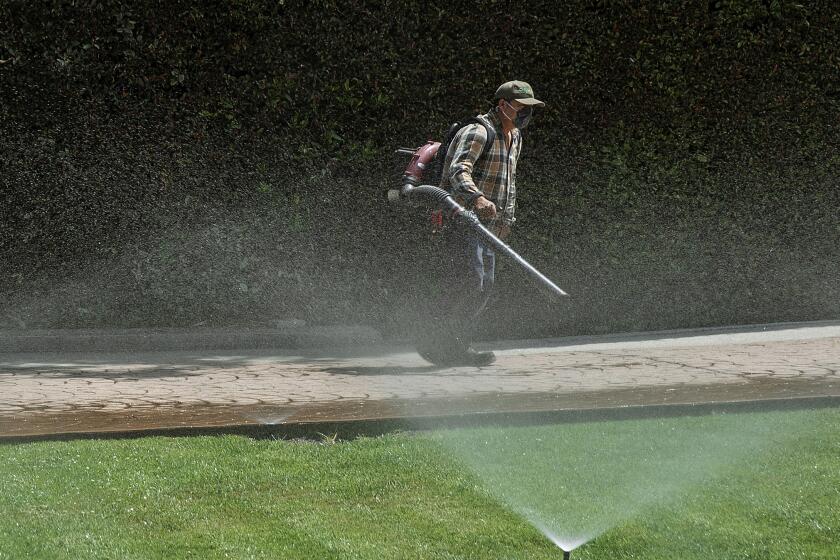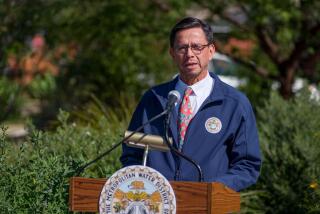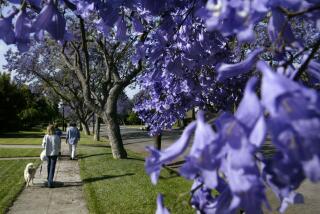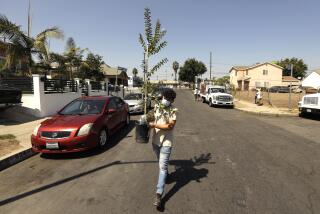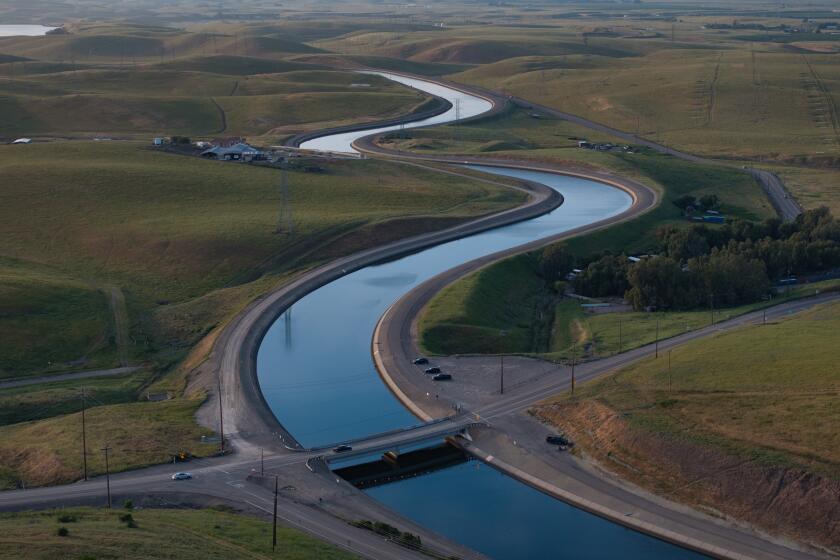SoCal needs to keep vital trees alive despite unprecedented watering restrictions
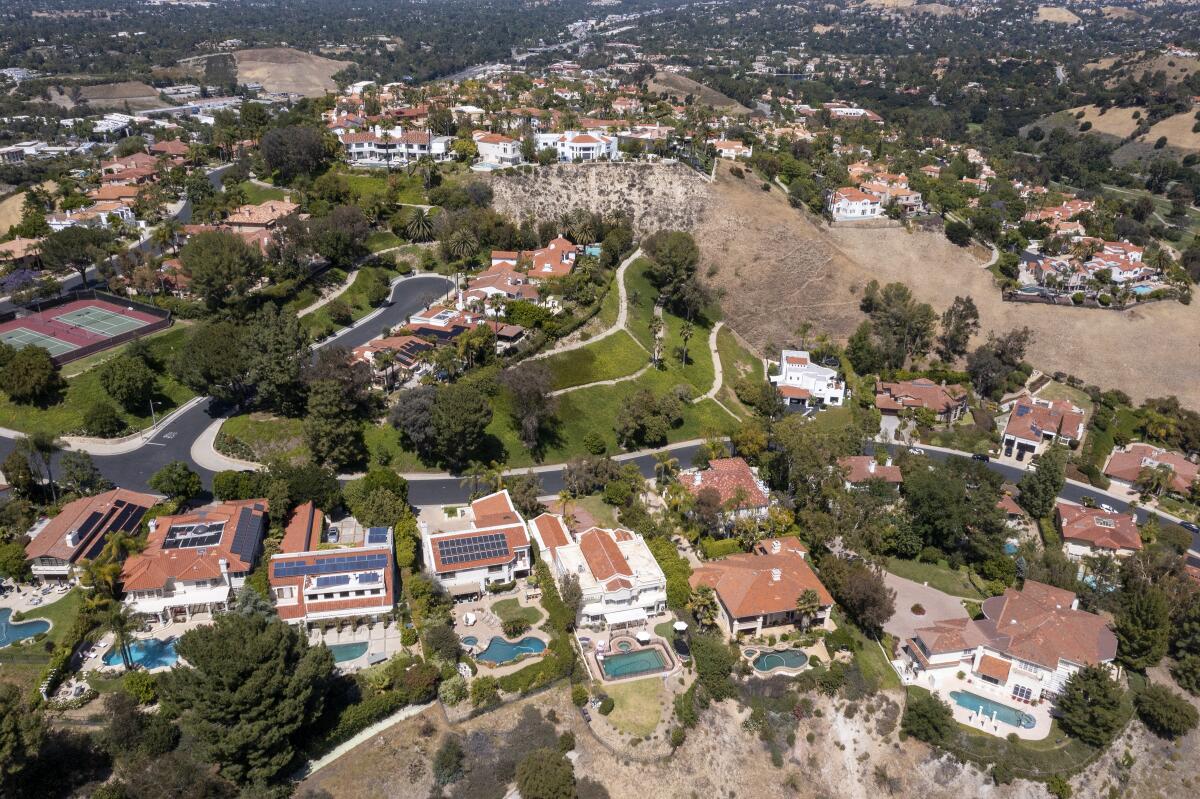
The lowly sidewalk tree often stands invisible. We rest in its shade, bask in the scent of springtime flowers, and we don’t notice it until it’s gone.
But the tree works hard. It captures and filters stormwater runoff and helps replenish groundwater. It cleans our air and cools our neighborhoods. It improves our mental health. It saves lives.
With Southern California officials clamping down on outdoor water use amid worsening drought, the message is clear: It’s fine for lawns to go brown, but we need to keep trees alive and healthy.
“Trees are long-term investments in the health and well-being of our neighborhoods and require some water to withstand periods of reduced rainfall, but they pay us back in tremendous benefits,” said city forest officer Rachel Malarich.
After years of complaints, lockouts and delinquent taxes, coastal authorities have fined a developer for failing to maintain a trailhead facility.
Under drought rules released by the Los Angeles Department of Water and Power last week, Angelenos will have to follow two-day-a-week watering restrictions beginning June 1. However, drip irrigation to a food source and hand-held hose watering of vegetation are allowed every day before 9 a.m. and after 4 p.m., according to the DWP’s Phase 3 rules.
The Bureau of Street Services, which maintains street trees, and the Department of Recreation and Parks, which maintains trees in parks, must also comply with the rules as Water and Power customers, said DWP spokesperson Ellen Cheng.
Arborists say the restrictions, followed correctly, shouldn’t have an effect on trees.
“I looked at it and said, ‘Nothing to worry about,’” said Nick Araya, board certified master arborist and owner of TreeCareLA. “Even the most delicate trees would be happy with eight minutes twice a week, and the larger trees will be happy with the occasional heavy watering by hand.”
Gov. Newsom asked Californians to reduce their water usage by 15% last year. Most places are nowhere near that mark.
However, what is a cause for concern is the public’s reaction to these kinds of restrictions, Araya said. His company is getting dozens of calls from people worried about their trees dying because of the drought.
“We know trees will suffer because of the messaging,” Araya said. “People aren’t interpreting it the right way.”
If people stop caring for their trees altogether, the effects won’t be seen until months later, Araya said. Though an under-watered tree may seem fine now, lack of water can prevent buds from forming properly the next season. Leaves might open on only half the tree, or open small and immediately die.
Trees on public land also face a threat.
During the last drought, some urban trees across Southern California were hit hard by the heat and lack of rainwater. In 2015, Los Angeles parks officials estimated that as many as 14,000 trees in L.A. parks — about 4% of the total — may have died during the last year of that drought. The year before that, officials said only about 1% of trees were found dead. Other communities saw similar problems.
Rachel O’Leary, executive director of City Plants, said compared with the previous drought, water agencies and various state organizations are working more proactively to get the message out on the importance of trees and keeping them alive during the drought.
City Plants, which runs a free tree program for Los Angeles city residents, has been in constant communication with the DWP about how to ensure that trees survive the drought, O’Leary said. Statewide organizations such as California ReLeaf and California Urban Forests Council have also posted information on optimal tree care during a drought.
“Trees are critical city infrastructure and they need to be watered,” O’Leary said. “They are actually one of the least water-intensive landscaping that we have [and] it’s a good investment of the water.”
While trees may need weekly waterings during the first three years of their lives, mature trees need only a heavy watering once or twice a month. A tree’s watering needs may also depend on its species and the type of soil.
Arborists recommend applying mulch around trees to reduce water loss from evaporation and to keep the soil cool. They also recommend pruning less live growth, as the tree’s canopy shades the ground below it and helps retain soil moisture.
“When water is a limiting factor, it is easier for a mature tree to maintain its health and canopy of foliage than to try to regrow the live foliage that was pruned,” said Andy Trotter, vice president of operations at West Coast Arborists.
Summer might also not be the best time to plant new trees, since the extreme heat can be hard on trees and people, O’Leary advised. Planting season in Los Angeles runs from October to the end of spring.
“Spend the time investing in tree care over the summer, take a look at what trees you do have and how you can best support them to get through this period,” O’Leary said.
Some experts say we might not even have to worry about the trees at all.
According to a study that examined previous water restrictions in Los Angeles from 2000 to 2010, there was not a major effect on vegetation even as outdoor water use decreased, said Beatriz Nobua-Behrmann, an urban forestry advisor with the University of California Cooperative Extension.
The study examined aerial imagery to estimate vegetation “greenness” and found it remained relatively stable over the 10-year period. Though there was tree mortality in some areas, there was not a huge change overall.
“The trees are maybe going to be OK,” Nobua-Behrmann said.
